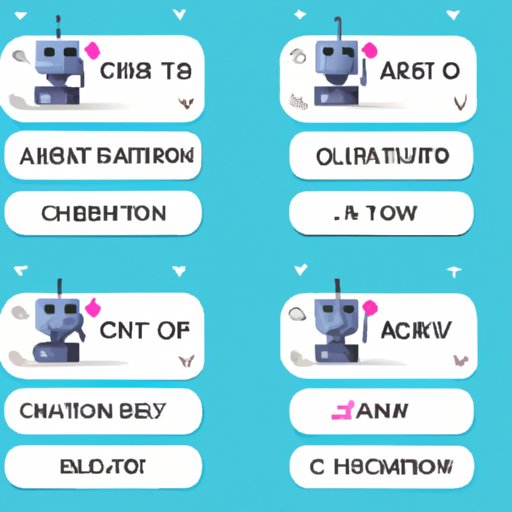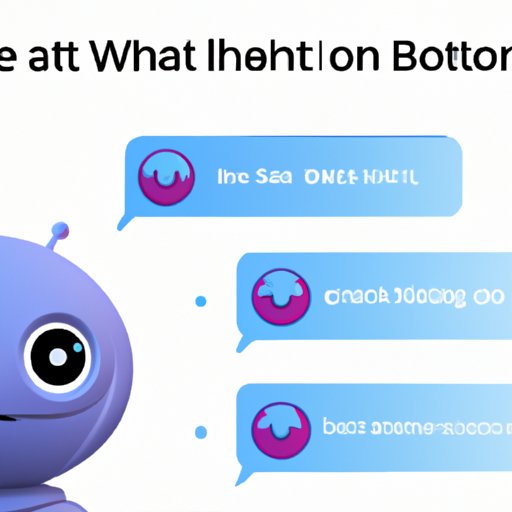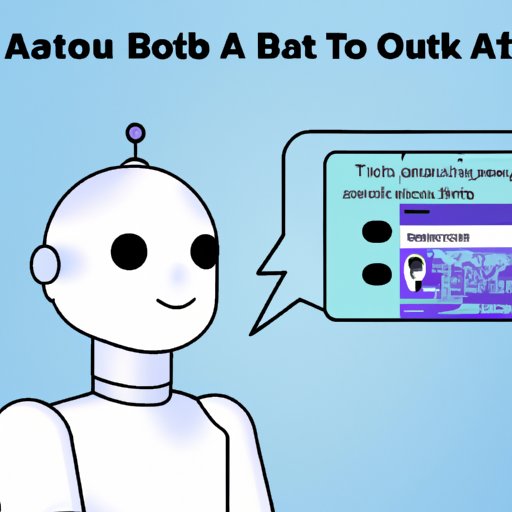Introduction
An Artificial Intelligence (AI) chatbot is a computer program designed to simulate conversations with humans. AI chatbots are powered by Natural Language Processing (NLP) technology, which enables them to understand the context of a conversation and interact with users in a meaningful way. AI chatbots can be used for customer service, sales, marketing, and more.
Using an AI chatbot offers several advantages, such as providing 24/7 customer service and automating mundane tasks. This allows businesses to save time and money while increasing customer satisfaction. AI chatbots can also be used to generate leads and increase website engagement.
Necessary Resources for Building an AI Chatbot
To build an AI chatbot, you’ll need both hardware and software resources. On the hardware side, you’ll need a computer or server with enough processing power to handle the AI chatbot’s workload. You may also need additional storage space depending on the size of the AI chatbot’s database.
On the software side, you’ll need an AI chatbot development platform. There are many platforms available, such as Amazon Lex, Microsoft Bot Framework, Google Dialogflow, and IBM Watson. These platforms provide the tools needed to design, develop, and deploy an AI chatbot.

Steps Involved in Creating an AI Chatbot
Creating an AI chatbot involves several steps. The first step is designing the conversation flow. This involves creating a script that outlines the conversation between the user and the AI chatbot. This script should include all possible paths the conversation could take and cover all relevant topics.
The next step is choosing the right software platform. Different platforms offer different features and capabilities, so it’s important to choose one that meets your needs. Some platforms offer pre-built templates, while others require you to build the AI chatbot from scratch.
Once you’ve chosen a platform, the next step is training the AI chatbot. This involves feeding the AI chatbot data and teaching it how to respond to certain inputs. The AI chatbot will then use this data to respond to user queries.

Common Challenges Encountered When Developing AI Chatbots
Developing an AI chatbot is not without its challenges. One of the most common challenges is difficulty understanding natural language. AI chatbots are still limited in their ability to understand human speech, so they may fail to recognize certain inputs or misinterpret them.
Another challenge is lack of data for training. AI chatbots need large amounts of data to learn how to respond accurately, so if there is not enough data available, the AI chatbot may not perform as expected.
Finally, limitations in AI technology can be a challenge. AI technology is constantly evolving, but it still has its limits. As a result, AI chatbots may not be able to perform certain tasks or may produce inaccurate results.

Tips on How to Optimize an AI Chatbot for Maximum Performance
To ensure your AI chatbot performs optimally, there are several steps you can take. First, automate repetitive tasks such as answering frequently asked questions. This will free up your team’s time and allow them to focus on more important tasks.
Second, set up analytics to measure your AI chatbot’s performance. By tracking key metrics such as response time and accuracy, you can identify areas where your AI chatbot needs improvement.
Finally, utilize machine learning to improve your AI chatbot’s accuracy. Machine learning algorithms can be used to analyze user input data and improve the AI chatbot’s responses over time.
Conclusion
Creating an AI chatbot can be a challenging task, but the rewards are worth the effort. With the right resources and the proper steps, you can build an AI chatbot that is efficient, accurate, and reliable. By following the tips outlined in this article, you can optimize your AI chatbot for maximum performance.
(Note: Is this article not meeting your expectations? Do you have knowledge or insights to share? Unlock new opportunities and expand your reach by joining our authors team. Click Registration to join us and share your expertise with our readers.)
